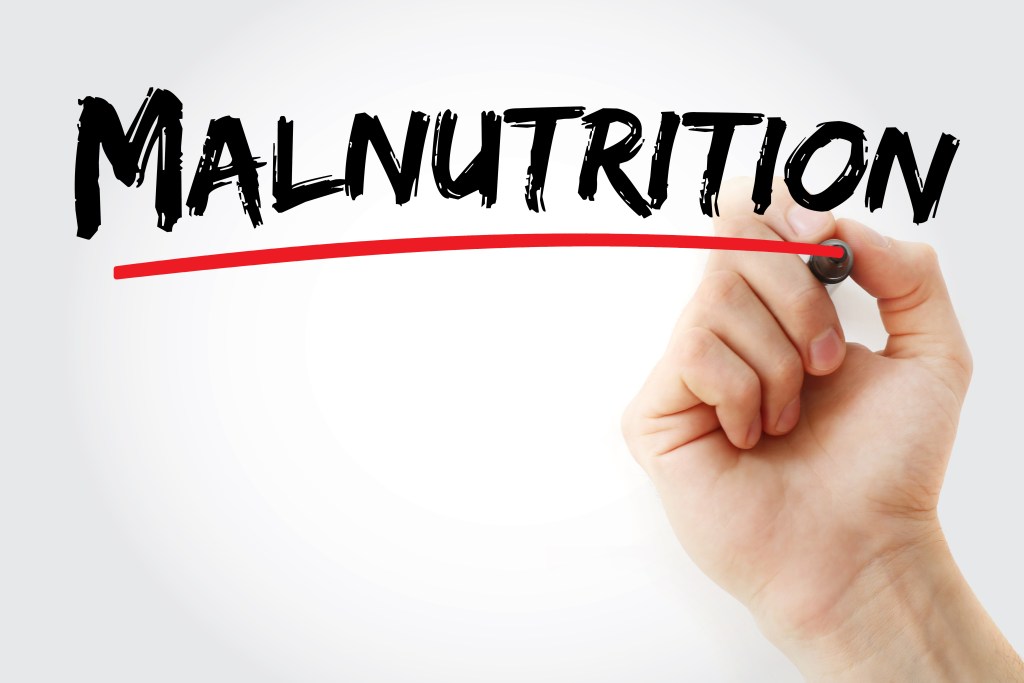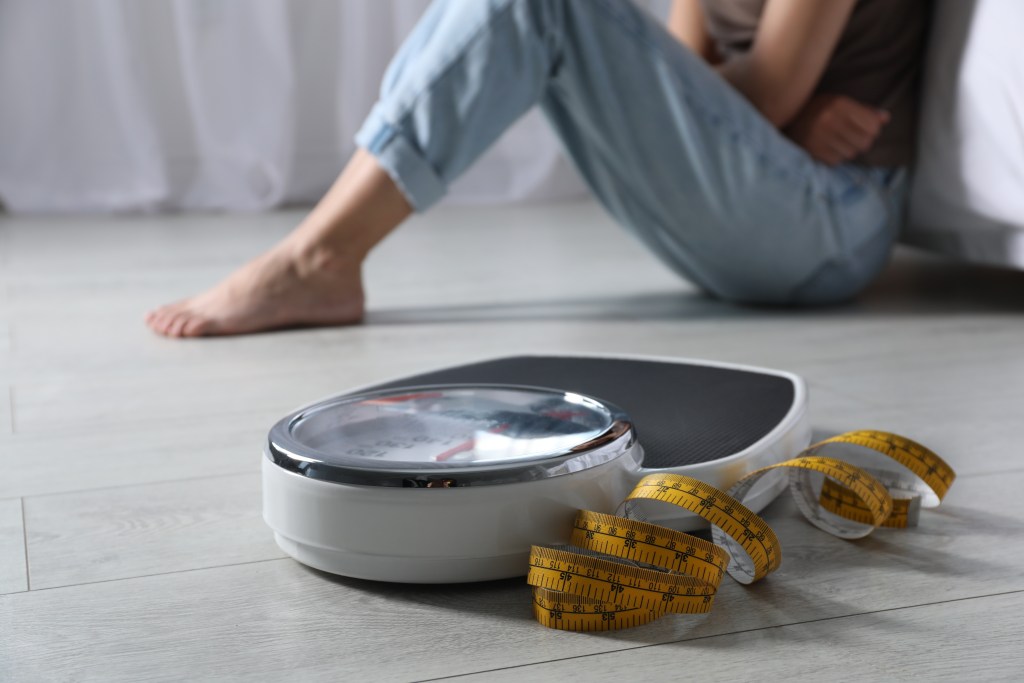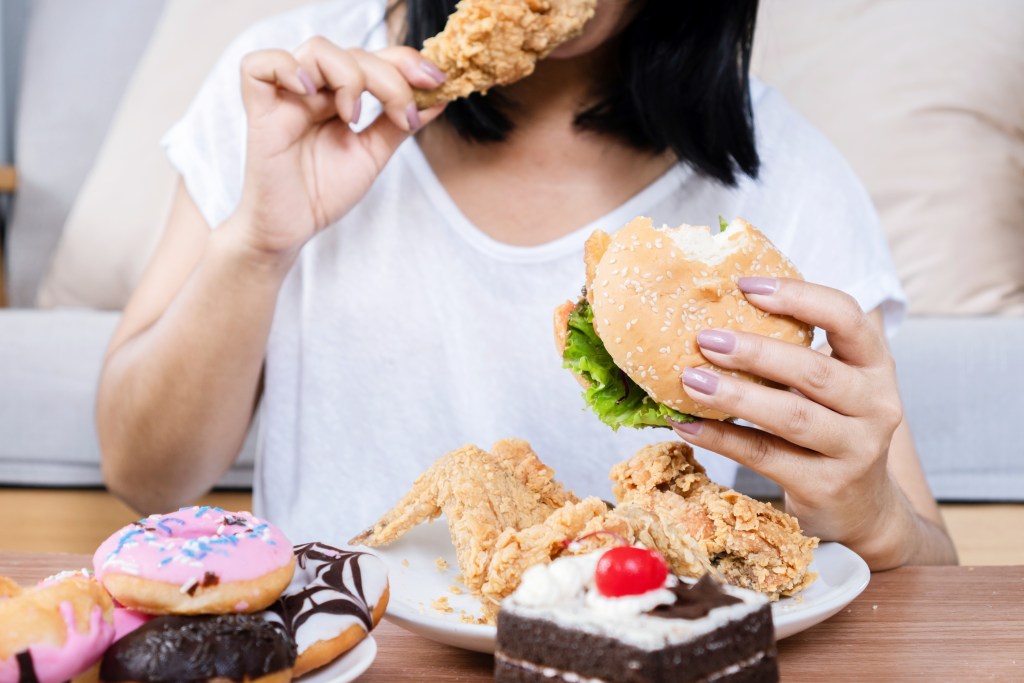Refeeding syndrome is a potentially life-threatening condition triggered by the rapid reintroduction of food after prolonged starvation, malnutrition, or extended fasting periods.
Those who go several days without eating and reintroduce rich foods too quickly can develop significant fluctuations in fluid and electrolyte levels, which can have detrimental health impacts.
Learn more about refeeding syndrome and how to safely break a prolonged fast to minimize the risk of adverse health effects.
What is refeeding syndrome?
Refeeding syndrome is a dangerous and potentially life-threatening condition that can develop when a person who is malnourished resumes eating after prolonged starvation.
It’s characterized by a sudden shift of electrolytes, resulting in either fluid overload or severe dehydration, potentially causing heart failure, respiratory distress, and neurological issues as the body struggles to process the rapid influx of nutrients.
“Refeeding syndrome is rare but can cause the rapid movement of nutrients into the cells,” explains Dr. Berg. “After prolonged fasting, overeating causes a surge of nutrients, which can lead to a severe electrolyte imbalance and trigger symptoms such as fainting and arrhythmia.”
Typically, the body metabolizes carbohydrates from food to generate energy for the cells. However, during starvation, the liver uses stored body fat and muscle tissue as primary energy sources.
During periods of prolonged severe caloric restriction, metabolic processes slow significantly, leading to reduced production of stomach acid, digestive enzymes, and certain metabolic hormones.
When refeeding begins, the body attempts to metabolize food normally, pulling excessive concentrations of electrolytes and nutrients into the cells, which can overwhelm cellular functions and lead to critical physiological imbalances.
Severely malnourished patients frequently suffer from deficiencies in multiple nutrients, resulting in a range of refeeding syndrome-related symptoms and complications that can significantly impact their health and recovery.
Watch the video below to learn how to break a prolonged fast safely.
Symptoms of refeeding syndrome
Symptoms of refeeding syndrome typically develop within one to five days of food reintroduction and can range from mild to life-threatening.
Common signs of refeeding syndrome include:
- Nausea
- Bloating and gas
- Breathing difficulties
- High blood pressure
- Cardiac arrhythmias
- Fatigue
- Lightheadedness
- Fainting
- Diarrhea
- Stomach pain
- Weakness
Critically ill patients may experience potentially fatal symptoms, including:
- Seizures
- Heart and respiratory failure
- Organ dysfunction
- Coma
If you show signs of refeeding syndrome or are worried about your health after prolonged periods of caloric restriction, it’s crucial to visit the nearest emergency room to receive prompt treatment.

What causes refeeding syndrome?
Malnutrition and severe vitamin deficiency are driving factors of refeeding syndrome.
During starvation, the body uses fat and muscle to generate the energy necessary for survival, depleting stored vitamin reserves and intracellular electrolytes, particularly phosphorus, potassium, and magnesium.
Rapid refeeding after starvation or prolonged fasting leads to a dramatic increase in blood sugar levels, prompting the release of insulin to normalize those levels.
In addition to regulating blood sugar levels, insulin also drives electrolytes into the cells, removing these essential nutrients from the bloodstream and contributing to potentially severe electrolyte imbalances.
Because electrolytes play critical roles in maintaining various vital physiological processes, electrolyte deficiencies can trigger complications of refeeding syndrome, such as heart arrhythmias, fatigue, respiratory distress, loss of muscle function, vertigo, and convulsions.

Risk factors
Chronic malnutrition linked to eating disorders, such as anorexia nervosa, and severe vitamin deficiencies due to prolonged caloric restriction are key contributors to refeeding syndrome.
These populations are at increased risk of refeeding syndrome:
- Anorexia nervosa patients
- Postoperative patients
- Elderly patients
- Cancer patients
- Alcoholics
Additionally, individuals with uncontrolled diabetes mellitus and those with inflammatory bowel disease, short bowel syndrome, or chronic pancreatitis are also at increased risk of malnutrition and refeeding syndrome.

How to break a fast safely
The benefits of Prolonged fasting have been shown to provide several health benefits, including weight loss, improved cellular health, hormonal balance, and a reduced risk of metabolic and cardiovascular disease.
Here are three tips on how to minimize the risk of refeeding syndrome.
1. Reintroduce food slowly
Prolonged fasts are defined as restricting food for 48 or more hours, which has been linked to better digestive, cardiovascular, and cognitive health.
However, significant metabolic changes occur in response to extended periods of caloric restriction, which explains why slowly reintroducing small amounts of food is vital to prevent refeeding syndrome.
It’s recommended to break a fast with easily digestible foods, such as steamed or fermented vegetables, soups, bone broth, stews, a boiled egg, or small amounts of fish, to avoid straining the digestive system.
2. Avoid rich and sugary foods
Avoid overwhelming the digestive system with large meals consisting of several food groups, including too much fat and hard-to-digest proteins, such as red meat.
Additionally, breaking a fast with high-carb or sugary foods can deplete B vitamins and electrolytes, which may increase the risk of metabolic imbalances and refeeding syndrome.
3. Support optimal nutrition
Before starting a fast, it’s important to focus on a nutrient-rich diet to prepare your body for periods of food restriction.
Prioritizing whole, unprocessed foods, especially those high in essential vitamins, minerals, and electrolytes, can help support your overall well-being during a fast.
Eating a variety of non-starchy vegetables, leafy greens, nuts, seeds, and mineral-rich foods helps nourish your body and reduce the risk of imbalances when you resume eating.
This approach can also help your body transition more smoothly into and out of a fasting state.

When to see a doctor
If you experience signs of refeeding syndrome after a prolonged fast, have an eating disorder, a body mass index (BMI) below 18.5, or have low serum phosphate, potassium, or magnesium levels, seek medical attention immediately.
Those who have lost 10 to 15 percent of their body weight in the past three to six months or have had no or inadequate food intake for five or more consecutive days should also consult a healthcare provider.
Additionally, patients who use certain medications, such as insulin, chemotherapy drugs, diuretics, or antacids, should consider routine blood work to monitor nutrient levels and minimize the risk of refeeding syndrome.
Treatment
The American Society for Parenteral and Enteral Nutrition’s (ASPEN) treatment recommendations for refeeding syndrome include initiating conservative calories and careful repletion of electrolytes, which may require total parenteral nutrition (TPN) in severe cases of malnutrition.1
TPN is an intravenous refeeding treatment that provides carefully calculated calories, proteins, carbohydrates, fats, vitamins, and electrolytes. In addition, healthcare providers are advised to routinely monitor vital signs, weight, and cardiorespiratory function.
Recovery from refeeding syndrome may take up to ten days of gradual refeeding, depending on the severity of the condition and related conditions that require treatment.

Key takeaways
Refeeding syndrome is a dangerous and potentially fatal condition characterized by a significant shift in bodily fluids and electrolytes that occurs when a malnourished individual resumes eating.
Patients with eating disorders, chronic illness, and malabsorptive syndromes are at the most significant risk of developing refeeding syndrome.
Individuals practicing prolonged fasting may also be at risk of refeeding syndrome. However, this risk can be minimized by gradually reintroducing nutrient-rich whole foods at a controlled pace.
FAQ
1. What is refeeding syndrome?
Refeeding syndrome occurs when a person is malnourished for an extended period of time and resumes eating normally, which can trigger rapid fluctuations of fluid and electrolyte levels as the body adjusts to normal metabolic function.
This can lead to critical imbalances and impaired physiological function, which explains why refeeding syndrome is a serious and potentially life-threatening condition.
2. How do you tell if you have refeeding syndrome?
The clinical symptoms of refeeding syndrome vary from mild to severe. These include nausea, breathing difficulties, fatigue, stomach pain, and lightheadedness or fainting. Potentially fatal signs of refeeding syndrome, such as seizures, organ dysfunction, and coma, may also occur.
3. How long after eating does refeeding syndrome occur?
Patients may develop refeeding syndrome as quickly as 24 hours after food reintroduction. However, it most commonly occurs between one and five days after resuming food intake.
4. What occurs in refeeding syndrome?
Resuming normal food consumption after a period of malnourishment causes blood sugar levels to rapidly elevate, which triggers the release of insulin to lower glucose levels.
Insulin redirects electrolytes into the cells, which can deplete serum concentrations of these essential nutrients, triggering rapid shifts in bodily fluids, impaired cellular functions, and dysregulated metabolic processes.
5. How do I avoid refeeding syndrome?
Those who are malnourished or have a condition that can lead to nutrient deficiencies should consult their healthcare provider about nutritional support.
Additionally, those who practice prolonged fasting can avoid refeeding syndrome by reintroducing food slowly, allowing the digestive system time to adapt. A boiled egg, soups, bone broth, or steamed vegetables are excellent options to break an extended fast while minimizing the risk of adverse effects.







